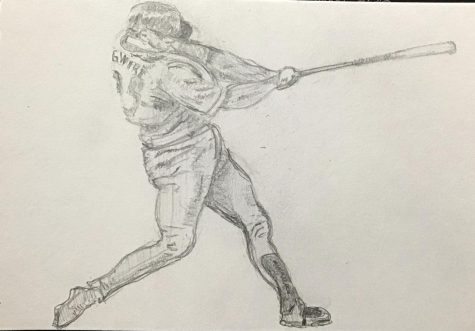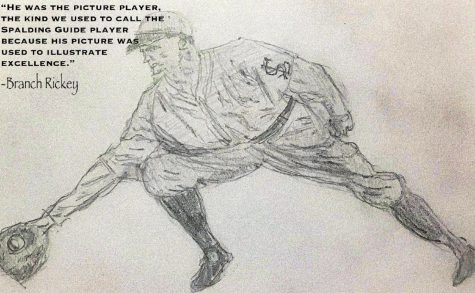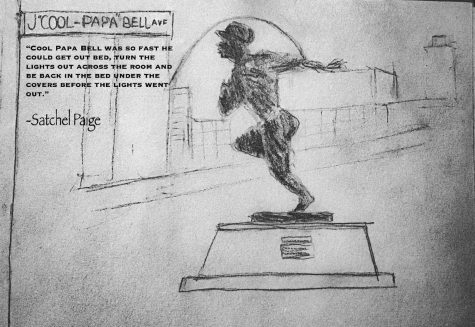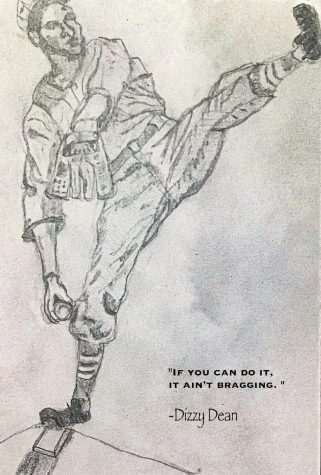Behind The Bronze
Of the many statues outside of Busch Stadium, there are many that get overlooked and do not receive the notoriety that they deserve.
The works of Harry Weber are staples of the decorum of Busch Stadium. The former Mary Institute Country Day School (MICDS) and Princeton alum is a sculptor with an international reputation and has designed and created famous statues of former Cardinals, St. Louis Browns, and St. Louis Stars players.
Of the twelve statues that surround the grounds of Busch Stadium, all are Hall of Fame inductees, including Stan Musial, Enos Slaughter, Dizzy Dean, Rogers Hornsby, Red Schoendienst, Lou Brock, Bob Gibson, Ozzie Smith, Ted Simmons, George Sisler, Jack Buck, and James “Cool Papa” Bell. Although there are only eleven players who have statutes, Stan Musial claims two of them.
However, not all of these men are former Cardinals players. George Sisler played for the St. Louis Browns and Cool Papa Bell played for the St. Louis Stars in the negro league, but neither were ever Cardinals. The criteria and qualifications to receive the honor of having a statue outside of Busch Stadium are both simple and practically non-existent.
Essentially, in order to be considered, the player must have spent most of their career with the Cardinals, be widely liked by the community, and have been inducted into the baseball Hall of Fame. But, there is one statue that is currently sitting in storage that many feel should take its place outside of Busch Stadium.

Mark McGwire is the statue that Cardinals baseball fans may never see. Weber made a small scale sculpture of McGwire to commemorate his 500th career home-run. Around the year 2000, the Cardinals owner Bill Dewitt commissioned Weber to make the Ozzie Smith sculpture, and at that time, McGwire was looking like a first ballot Hall of Famer, so Dewitt thought it made sense to have Weber sculpt a full size statue of McGwire at the same time. Unfortunately, after McGwire’s statue was finished, his Hall of Famer dreams came crashing down when the PEDs (Performance Enhancing Drugs) court case came out. So, McGwire came up just short of both a spot in the Hall of Fame and a spot outside Busch Stadium. Instead, his sculpture will remain in the bowls of Busch.

George Sisler is the only other non-Cardinals player honored outside of Busch Stadium, with the other non-Cardinal being Cool Papa Bell. Sisler began his career as a pitcher before becoming one of the greatest hitters of all time. He was first a pitcher for the St. Louis Browns in 1915 but was moved to first base to get his big bat in the lineup. In fifteen seasons, Sisler batted above .300 in thirteen of them, including league leading averages of .407 in the 1920 season and .420 in 1922. He also led the league in stolen bases four times. Sisler claimed that starting out as a pitcher influenced him greatly in his hitting career.
“I used to stand on the mound myself, study the batter, and wonder how I could fool him…Now when I am at the plate, I can the more easily place myself in the pitcher’s position and figure what is passing through his mind,” said Sisler according to the Baseball Hall of Fame.
Sisler was inducted into the Hall of Fame in 1939 after ending his career with 2,812 hits and a .340 batting average. His statue states, “One of the best two fielding first basemen in the history of the game.”
Sisler’s manager for the St. Louis Browns, Branch Rickey, brought Sisler with him to Los Angeles, California to be a scout after his playing career was over. Sisler played a large role in bringing in Jackie Robinson and converting him into a first baseman.

James Thomas “Cool Papa” Bell is known for his legendary speed and is perhaps one of the fastest players to ever play professional baseball. Satchel Paige, legendary pitcher, is credited with the often-told line, “Cool Papa Bell was so fast he could turn off the light switch in his hotel room and be under the covers before the room got dark.” Bell started as a pitcher for the St. Louis Stars and was switched to pitching two years into playing centerfield. He was a terror on the base paths throughout his whole career.
Bell was not only in the Negro League Hall of Fame located in Kansas, but he also is represented in the Baseball Hall of Fame in Cooperstown. His time with the Stars solidified him as a St. Louis icon. He was able to have a large impact on the lives of many African Americans through his excellent play and character. Bell was more than just a player; he truly cared for the community.

Jay Hanna, also known as Dizzy Dean, was not only a Cardinals player but also played for both the St. Louis Browns and the Chicago Cubs. He was elected into the baseball Hall of Fame in 1953, and his statue was unveiled on May 27, 2000. Prior to professional baseball, Dean was in the U.S. army, where he got his nickname and pitched for the Fort Sam Houston baseball team. Dean is more notably known for being a part of the “Gashouse Gang,” which was a nickname given to the Cardinals between 1930 and 1934 when they won three National League pennants in 1930, 1931, and 1934.
Dean is one of the fourteen former Cardinals players who have received the honor of having their numbers retired. He was described as both a “warrior and a winner” who “was known for his fun-loving lifestyle and story telling as much as his success,” according to the Cardinals Baseball website. After a successful season in 1935, where he led the league with 28 wins, Dean was selected to four consecutive All-Star Games from 1934 to 1937. However, in the 1937 All-Star Game, a hard hit line drive went straight for him and broke one of his toes. Due to his refusal to let the injury have proper time to heal, he developed an unnatural pitching motion, causing an arm injury that ended his career. Overall, Dean can be compared to a modern day Connor McGregor as far as promoting the game and throwing out pre-game predictions that he would come out on top.
“If you can do it, it ain’t bragging,” said Dean.



